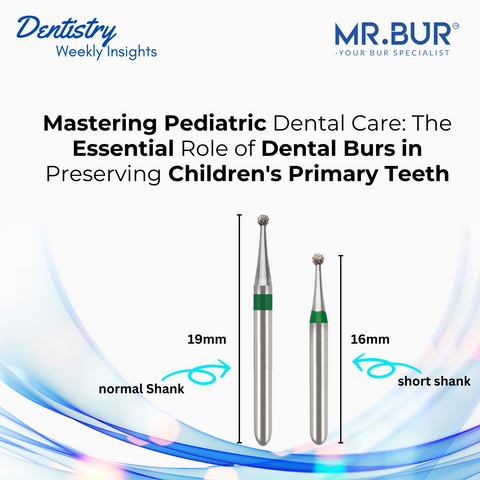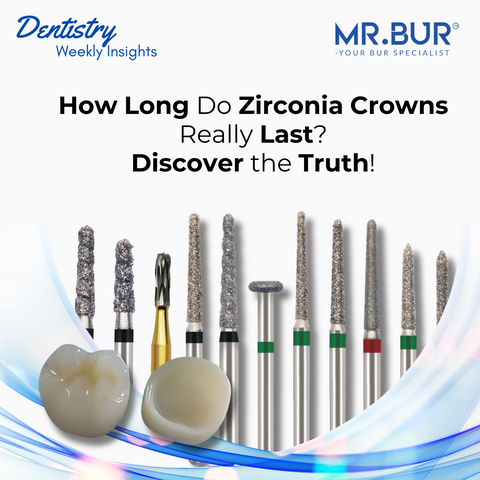In the world of dental technology, the finishing process of dental appliances, particularly retainers, is just as crucial as the fabrication itself. The final touches determine not only the aesthetic appeal of the retainer but also its comfort and functionality. Retainer polishing burs play a vital role in this process, helping dental technicians achieve a smooth, high-quality finish that meets both the clinical requirements and the patient’s expectations.
The Significance of Finishing in Retainer Fabrication
Every dental appliance, especially retainers, must balance functionality with aesthetics. A well-finished retainer is not only more comfortable for the patient but also more visually appealing, which can significantly influence patient satisfaction. In my experience, patients who are pleased with the appearance and comfort of their retainer are more likely to wear it as prescribed, which directly impacts the success of their treatment.
A smooth surface is essential to prevent irritation to the patient’s gums and cheeks. Rough spots or edges can lead to discomfort, causing the patient to avoid wearing the appliance. Additionally, a well-polished surface is less likely to harbor plaque, which can reduce the risk of decay and periodontal issues, particularly in long-term wearers.
Techniques for Polishing Retainers
The polishing process is methodical, with each step building on the previous one to create a flawless finish.
Initial Shaping & Surface Refinement: The process begins with Mr. Bur TC22 trimmer & retainer wheel cutting burs to contour and trim the retainer. This step ensures that the retainer fits snugly and comfortably in the patient’s mouth. Precision is key here, as any inaccuracies can lead to discomfort or even the need for a refabrication. During this step, it’s important to maintain a gentle touch to avoid over-trimming
Final Polishing: The final stage involves using HP fine polishing wheel & cashmere polishing burs to polish the retainer to a high gloss. This not only makes the retainer look more attractive but also improves its feel in the mouth. A polished retainer is less likely to irritate the gums or cheeks, which can improve patient compliance with wearing the appliance as recommended.
Enhancing Aesthetics Through Effective Polishing
A well-polished retainer is not only functional but also visually appealing. The clarity and transparency of the material are enhanced through effective polishing, making the retainer less noticeable when worn. This can be particularly important for patients who are concerned about the aesthetic impact of wearing a retainer.
Patient Perception: A retainer that looks clean and polished is more likely to be worn consistently by the patient. When a patient is satisfied with the appearance of their retainer, they are more likely to follow through with their treatment plan, leading to better outcomes. I’ve seen this firsthand in my practice—patients who are pleased with the look and feel of their retainer are much more diligent about wearing it.
Avoiding Common Issues: Proper polishing techniques are crucial to avoid common issues such as cloudiness or surface imperfections. These can detract from the retainer’s appearance and may also cause discomfort. By using the appropriate burs at each stage of the polishing process, dental technicians can ensure that the retainer not only functions well but also meets the highest aesthetic standards.
Improving Comfort and Fit
A well-polished retainer is not only visually appealing but also comfortable to wear.
Reducing Soft Tissue Irritation: Rough edges and surfaces can irritate the soft tissues of the mouth, leading to discomfort and even sores. Proper polishing smooths these edges, making the retainer more comfortable to wear. In my experience, patients are much more likely to comply with wearing a retainer that doesn’t cause them discomfort.
Achieving a Smooth, Comfortable Fit: The final polishing stage is crucial for ensuring that the retainer fits comfortably in the patient’s mouth. A smooth surface reduces friction against the gums and cheeks, making it easier for the patient to wear the retainer for extended periods.
Long-Term Wear: A well-polished retainer is easier to clean, which can reduce the risk of plaque buildup and associated oral health issues. Patients are more likely to wear a retainer that is easy to clean and doesn’t cause them discomfort, leading to better long-term compliance with their treatment plan.
The Role of Retainer Polishing Burs in Appliance Longevity
The longevity of a retainer is directly influenced by the quality of the finishing process.
Durability of Finishing: A well-polished retainer is less likely to develop microfractures or cracks, which can significantly shorten its lifespan. By using the right polishing burs and techniques, dental technicians can ensure that the retainer remains durable and functional for as long as possible.
Minimizing Microfractures: Improper polishing techniques can introduce microfractures into the retainer, which can weaken the appliance over time. By using the appropriate burs and following a methodical polishing process, these microfractures can be minimized, extending the life of the retainer.
Practical Tips for Dental Technicians
Selecting the Right Bur for the Job: Each stage of the polishing process requires a different type of bur. It’s important to select the right bur for the job to achieve the best results. For example, using a diamond bur for initial shaping and a felt bur for final polishing will help ensure a smooth, polished finish.
Maintaining Polishing Burs: Proper maintenance of polishing burs is essential for ensuring their longevity and effectiveness. Burs should be cleaned and inspected regularly to ensure they remain sharp and functional. Dull burs can lead to poor cutting performance and an inferior finish.
Quality Control: Establishing a quality control routine is essential for ensuring that every retainer is polished to the highest standard before it is delivered to the patient. This includes inspecting the retainer for any remaining rough spots or imperfections and making any necessary adjustments before it is finalized.
MR. BUR US we provide a wide range of dental burs selection in global.
Get your retainer kit now: https://www.mrbur.com/products/essix-retainer-contouring-and-polishing-kit-hp
Diamond Burs, Carbide Burs, Surgical & Lab Use Burs, Endodontic burs, IPR Kit, Crown Cutting Kit, Gingivectomy Kit, Root Planning Kit, Composite Polishers, High Speed Burs, Low Speed Burs
Subscribe our newsletter now!





